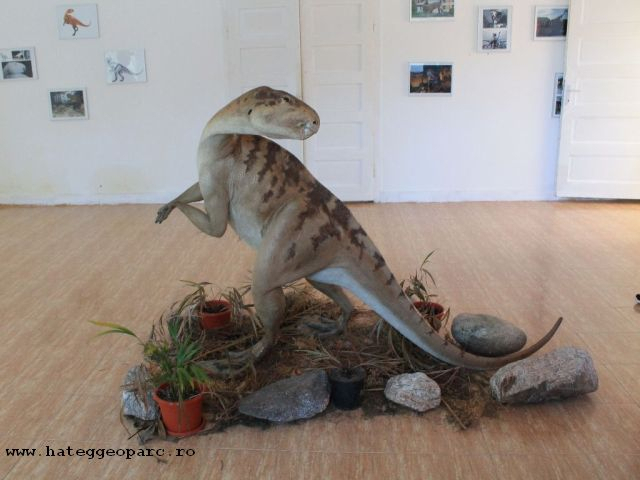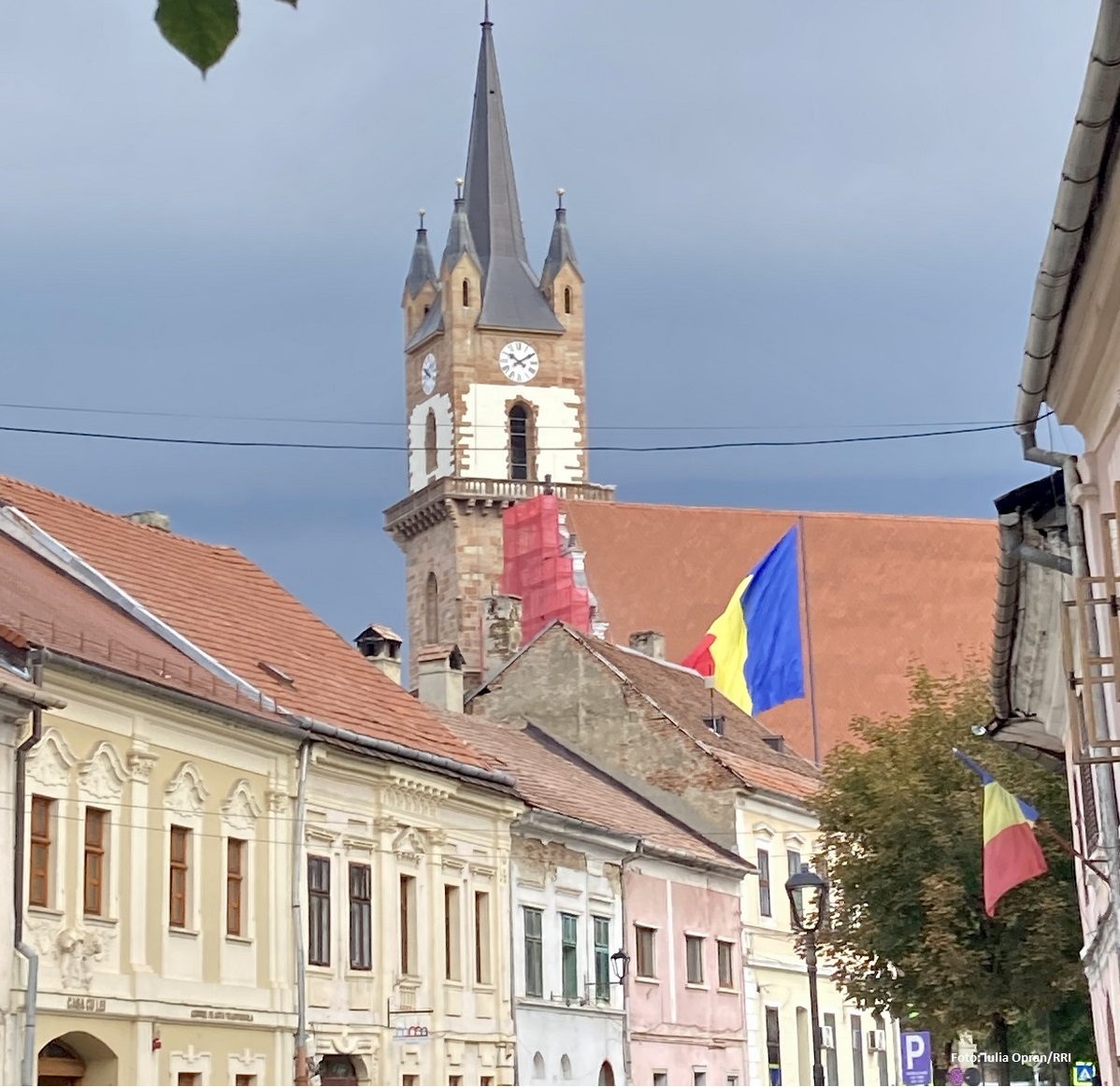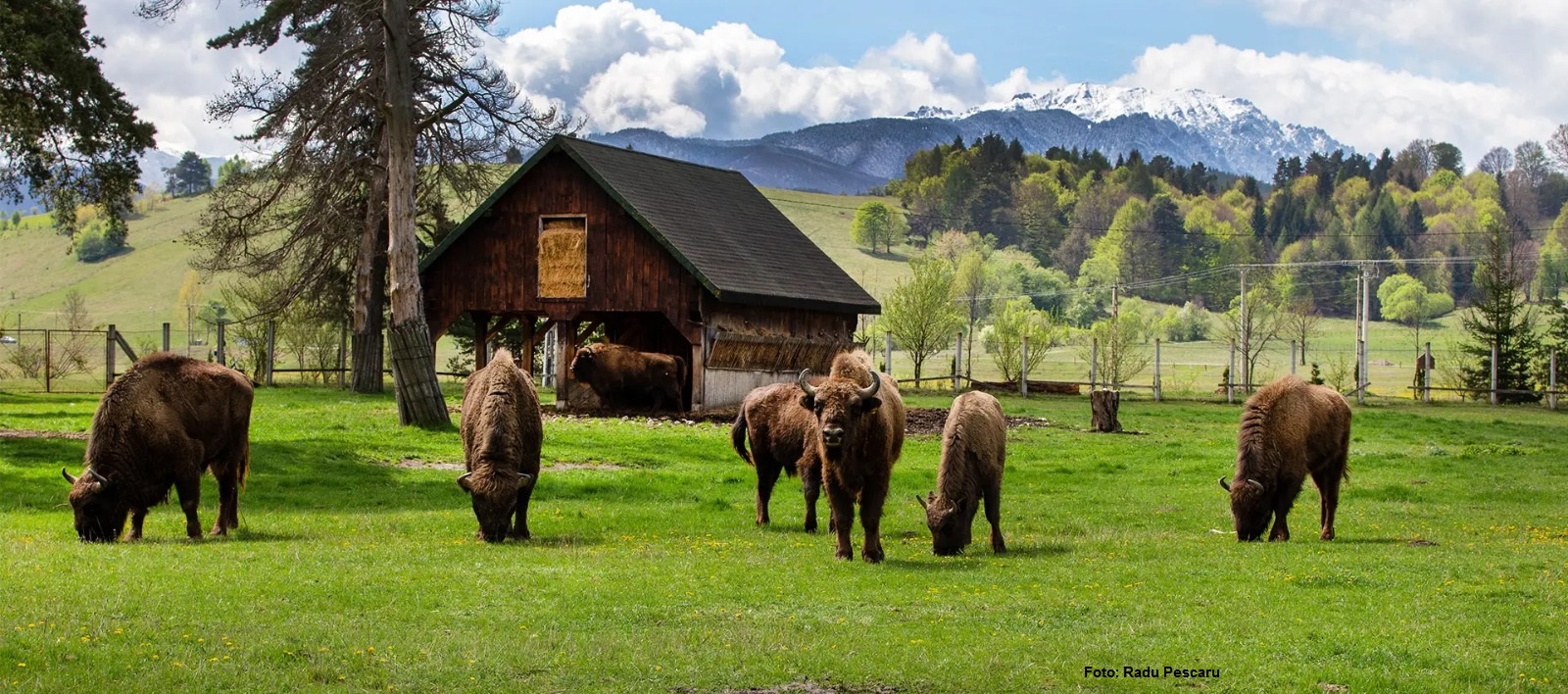Romania’s breathtaking landscapes: past into present
The Hateg County's Dinosaurs Geopark

Daniel Onea, 04.08.2022, 14:00
Were heading, today, towards Hateg Country, a historical and ethnographical region. Putting to good use all the assets of the region, here we can find the Hateg Countrys Dinosaurs Geopark. It is a UNESCO site, currently under the administration of the University of Bucharest. It is a realm of authentic stories, based on scientific research and made sense of in a language which is accessible to the lay public. University lecturer Dr Alexandru Andrasanu is the coordinator of UNESCOs International Geoparks program. He will be our guide today.
“The geopark actually encompasses the entire Hateg Country. It is a UNESCO international brand, including 12 localities in Hunedoara County, in south-western Transylvania, It is part of an international network of 177 territories in 46 countries. Were proud we are Romanias first UNESCO site. The land of Buzau is soon to be the second UNESCO site. So we have a precious heritage, nay, we have a territory where the story of the earth blends into the story of the people”.
The nature area was officially declared a Nature Park in 2004. Since 2005, the geopark has gained acceptance in the European Geoparks Network and in the Global Network. It was South-eastern Europes geopark to have been granted this international status, in 2005. Here is Dr Alexandru Andrasanu once again, with details on that.
“The scientific activity proper began more than 100 years ago, when the first dinosaur bones were discovered. Then there were also the dinosaur eggs that were completed by the fossil remains of several animals that used to live here more than 70 million years ago. Of course, the most interesting are the famous Transylvanian dwarf dinosaurs. They are called dwarfs because an island used to be here 70 million years ago. The dinosaurs, in millions of years, had become smaller than their relatives, yet they were more interesting. With them, we find a great many other remains, from flying reptiles, to turtles, lizards, mammals. It is a fascinating story of the Earth, and a one-of-a-kind story, at that. Starting off from the scientific story, we went the whole hog and built the international geopark, which is an entire territory in its own right, where science blends into peoples legends, into the landscape. Also, we should not overlook the fact that the Hateg Country comes up with discovery and educational routes.”
The area has become increasingly tourism-prone, yet it is not mass tourism were having. It is “discovery tourism”, according to university lecturer Dr Alexandru Andrasanu, the coordinator of UNESCOs International Geoparks program.
“We can discover nature, the people, the landscapes. By “nature” I mean Hateg Country, the Retezat and Sureanu Mountains we can see around us. But then we can travel to Hunedoara, Deva, or to Sarmisegetusa Regia. The routes are quite diverse. We, for instance, can suggest a route along the Dinosaurs Valley. As of late, apart from the spots we ourselves have arranged, where the first dinosaur bones were discovered, a fun park has been opened, promoting the dinosaurs of Transylvania. There are replicas of a couple of dozens of dinosaurs and other elements of attraction. Also, we tell the Volcanoes Tale. You can also take a route including the 12th century church in Densus and the Volcanoes House. Here children and adults alike can participate in specific educational activities so they can find out more on the volcanoes that used to erupt here, in the dinosaurs time. “
However, you can also choose routes where nature blends into tradition. Dr Alexandru Andrășanu
“You can visit the 13th century Calvinist-Reformed Church in Sântămăria-Orlea, a daffodils glade, the recently-restored 14th century Malaiesti fortress. Then you can head towards the Retezat National Park Visiting Centre. And, if you travel a little bit further than Hateg Country, you can take the route to Pestera Bolii, the Sickness Cave and to Petrosani. There are routes taking you to our exhibition, the Geopark House, where we can discover a story about griffins, dragons and dinosaurs. Then you can take the route to the ruins of the Roman fortress in Sarmisegetusa Ulpia Traiana or the Ostrov Church, founded in 1360, or to Clopotiva, a traditional village, or to Cetatea de la Colți, which are very beautiful. Then, if you come from the Prislop Monastery, in Hunedoara you can hit the Corvins Castle. A tourist arriving in the Hateg Country can visit a number of assets, can take up trekking routes, can climb the Retezat Mountains, by foot or by bike. The scenery is definitely rural, it is a depression surrounded by mountains. Right now I am here and there is still snow in Retezat. It is a fairy-tale scenery.”
For more info on the routes, you can visit the parks Internet page, at hategeoparc.ro. There is also a Facebook page and an Instagram account. Those who reach Hateg can have a stopover at the information centre and the exhibition of griffins, dragons and dinosaurs, where there also is a reconstruction of the regions most ferocious dinosaur. It is the Bondoc Griffin, bearing a Romanian name.
The area is continuously growing, but not necessarily in terms of number of tourists, but in terms of attractions and diversity of activities. With details on that, here is University lecturer Dr Alexandru Andrasanu, the coordinator of UNESCOs International Geoparks program.
“The partnership we have with the Countys Tourism Promotion Directorate is very close. The latters development vision includes our geopark as well. On one hand, our projects target a more extended area in our county, on the other hand, were encouraged to use the new technology, the augmented reality in order to fill in what cannot always be explained in words, all the more so as we speak about lost worlds. Therefore, we try to give visitors the chance to enrich what they see with reconstructions based on scientific research. The geopark is administered by the University of Bucharest, and underlying all our projects are the scientific results of our colleagues, but also of researchers in other universities, from Romania and around the world.”
So here is a destination for all, but mostly for families. There are a great many children who come here with parents and grandparents, mainly because they want to find out the story of the dinosaurs, the volcanoes the plants and the mountains.
(EN)






























